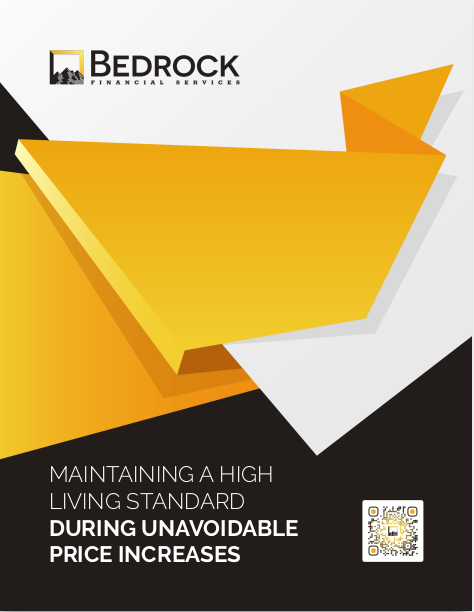Key Takeaways
-
Building a testimonial system is more sustainable and effective than chasing individual testimonials.
-
Automation, timing, and personalization are critical components of a testimonial strategy that grows your brand.
Why Testimonials Matter More Than Ever in 2025
In 2025, clients don’t just rely on your credentials or product offerings. They look for social proof. Testimonials are no longer just nice to have—they’re critical to trust-building and conversion. In a crowded field of financial professionals, what others say about you often carries more weight than what you say about yourself.
But here’s the mistake many advisors still make: they ask for testimonials randomly, late, or not at all. Or worse, they rely on the occasional client who volunteers a few kind words. That’s not a strategy. That’s luck.
To generate consistent, high-quality testimonials, you need a system. One that integrates naturally into your client journey, doesn’t feel forced, and operates with minimal effort from you.
The Shift From Manual Outreach to Systematic Collection
A testimonial system works when it runs almost automatically. Instead of reminding yourself to ask after a great meeting or transaction, you build it into the experience.
Here’s what that system might include:
-
Trigger points where a testimonial request is sent (e.g., 30 days after onboarding)
-
Pre-written email or SMS templates that make the ask simple and conversational
-
Testimonial forms that ask guided questions instead of leaving it open-ended
-
Automated follow-ups for clients who don’t respond right away
The goal is to shift from hoping a client sends something to consistently receiving feedback that strengthens your credibility.
When to Ask: Timing Is Half the Battle
The right time to request a testimonial is when your client is emotionally invested. This usually aligns with a moment of success or relief:
-
Shortly after completing onboarding
-
After a big milestone, such as a successful investment or policy approval
-
During annual review meetings when outcomes are clear
In 2025, digital tools allow you to set these timelines in your CRM or email platform, so your testimonial system runs without micromanagement.
What to Ask: Crafting Prompts That Get Real Answers
Generic prompts like “How was your experience?” rarely produce useful testimonials. Instead, use specific, structured questions that draw out powerful feedback:
-
What was your biggest concern before we worked together?
-
How did you feel after our first meeting?
-
What specific results have you seen since working with me?
-
What would you say to someone considering working with me?
Use 3–5 of these in your testimonial request forms to guide the client through a narrative. Their answers create more authentic and persuasive content.
Where to Collect: Channels That Work in 2025
You don’t need to rely only on email. In 2025, you have access to a range of client touchpoints where you can embed your testimonial system:
-
Post-meeting follow-up emails
-
Client portals or financial dashboards
-
Secure messaging apps used for financial updates
-
QR codes on physical mail or client gifts
Make it easy for clients to respond wherever they already engage with you. The fewer clicks between them and your testimonial form, the better.
How to Automate Without Losing the Personal Touch
A major concern for many advisors is that automation feels impersonal. But done right, automation can actually feel more thoughtful because it’s consistent, timely, and polished.
Ways to add a human touch:
-
Personalize the testimonial request with the client’s name and a reference to the recent interaction
-
Use your actual email signature rather than a generic system footer
-
Send a short thank-you video after they submit a testimonial
You can pre-record evergreen videos and still make clients feel like you value their input.
Building Your Testimonial System: Step-by-Step
If you’re starting from scratch, here’s how to build a testimonial machine that works on autopilot:
-
Map the Client Journey: Identify 2–3 natural points where clients feel satisfied and would be open to sharing their experience.
-
Create Trigger Automations: Use your CRM or email tool to set timed workflows around those client touchpoints.
-
Design Your Form: Use a testimonial form with specific questions. Platforms like Typeform or Google Forms work well.
-
Write Your Messages: Prepare email and SMS templates for the request and follow-ups.
-
Test the System: Run a test with a few trusted clients. Adjust timing, messaging, or form structure based on their feedback.
-
Go Live: Activate the workflow for all new clients and begin retroactively inviting feedback from past clients.
By doing this once, you eliminate the awkwardness and forgetfulness that often derail testimonial collection.
What to Do With Testimonials Once You Have Them
A testimonial only works if it’s seen by others. Don’t let valuable feedback sit in your inbox or form software.
Make the most of each testimonial by:
-
Adding it to your website (especially your homepage and services pages)
-
Creating quote graphics for social media
-
Embedding them into your client onboarding materials
-
Sharing them in follow-up emails to leads
-
Using snippets in webinar slides or presentations
Don’t just showcase the best testimonials. Showcase a variety of voices that reflect different client types. This helps future clients see themselves in your story.
Legal and Ethical Considerations in 2025
As of 2025, regulations around testimonials for financial professionals still require care. Even with the easing of some advertising rules, you must remain compliant:
-
Get written consent before publishing any client testimonial
-
Avoid promising results or manipulating quotes
-
Clearly mark any testimonials that involve compensated clients
-
Store records of permissions for future audits
If you’re unsure, consult your compliance officer or legal advisor before publishing anything. It’s better to be safe than risk reputational or legal damage.
How Long Should You Keep Testimonials?
Old testimonials can still be effective if they reflect enduring value. But ideally, refresh them every 12 to 18 months. This ensures your social proof stays relevant to the current market climate and your evolving services.
Segment your testimonials by recency:
-
Last 6 months: Highlight on your website and client proposals
-
6–18 months: Use selectively for context
-
Older than 18 months: Archive or replace
Keeping your testimonials updated shows that your service quality is consistent over time.
What Makes a Testimonial Truly Persuasive
Length doesn’t matter as much as clarity and emotion. The best testimonials have:
-
A clear before-and-after narrative
-
Emotionally charged phrases (“I was stressed” vs. “I was relieved”)
-
Specific references to your value (not generic praise)
A short, impactful testimonial often outperforms a lengthy but vague one.
Why This System Pays Off Long-Term
With a working testimonial system, your brand starts to scale itself. Prospects see real proof of your value before speaking with you. Clients feel heard and appreciated. Your marketing gains traction from authentic content.
Most importantly, it takes the pressure off you. You no longer need to chase validation. It comes to you naturally, predictably, and with powerful results.
Start Turning Client Trust Into Marketing Momentum
If you’re serious about growing your reputation and influence in 2025, you need more than one-off reviews. You need a feedback engine.
At Bedrock Financial Services, we help professionals like you implement scalable marketing systems that bring in consistent leads, testimonials, and client engagement—without adding more to your workload. Our CRM tools, automation workflows, and branding support are designed to make your reputation work for you 24/7.
Join us today and start turning trust into long-term growth.







